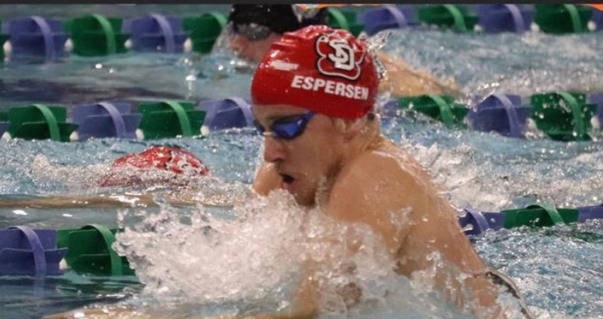The COVID-19 lockdown and social distancing have had a major effect on youth sports but according to one local coach, the break from the regularly scheduled events is, perhaps, not such a bad thing.
“We’ve had this idea that we need to keep the kids doing the same thing we’ve been doing for a long time, but this break in that regimen might actually be to our benefit in the long run,” said Tom Best, head coach of the Bulkley Valley Otters Swim Club.
He said this break from competitive swimming gives kids a chance to engage in other activities and spend time with their families, which is good for their mental and physical well-being, especially since few will go on to compete at the highest levels.
Best has been coaching swimming and judo for over 30 years and in that time, he feels many sports organizations have done more to try to enhance international-level performance while ignoring participants at the local level.
“If I look at the numbers of kids involved in many sports, in general, the numbers keep going down. It is not hard to tell where the money is going in most sports and in general, it always looks like it’s for the top-level with very little for the base. The number of kids who get to that top-level is way under one per cent,” he said.
He feels that while it might look like it, there are really no elite 10- or 12-year-olds. Long term, hardly any of these kids make it to the top level. Most quit or go on to other activities.
“What we need at the local level are programs that present a fun learning opportunity and teach the kids the values of hard work through sport,” Best explained.
The local community does a very good job providing a wide variety of sports being coached and taught by experienced professional and volunteer coaches. One result is that athletes go on to the university level where they have done very well, sometimes in sports that they have had very little contact with while growing up.
Recently, two Otters club members have shone at university. Tanner and Bailey Espersen swam with the program before heading off to study at the post-secondary level. Tanner was on a full scholarship to the University of South Dakota, where he was named an All-American Academic, the only member of the swimming squad to achieve such an honor.
He felt that the background he got training here enabled him to develop all of his strokes and gave him a love for the sport.
“After I swam my last race this year, I took off my cap and goggles and cried,” he said.
Recently, he was named MVP on the 40 member team.
Bailey attended the University of Victoria on a scholarship. This season, he was voted the captain of the team by his teammates and went on to set a number of team records. He was a national finalist in his specialty, the breaststroke, and qualified to attend the now cancelled Olympic Trials.
Bailey felt that the program in Smithers helped him more than just to learn how to swim.
“I swam two-thirds the distance that my teammates did and I had a good break every summer. Besides that, I was able to do a lot of stuff that I enjoy like fishing,” he noted.
Best notes that they are just the latest two swimmers who have gone from the club to the university level over the years and in a wide range of sports.
Being active and enjoying that activity is the real key according to Best.
“We don’t have a huge pool. It would be nice to have a bigger one but it’s not critical,” he said. “We had a swimmer (Jonathan Dieleman) go to the Paralympics and set national and international records. We’ve had kids like Kanna Kurihara swim against kids who do a much greater volume of training and she has been able to medal at provincials in the harder 200-metre events like the butterfly and the backstroke. We’ve had kids develop the mental and physical skills that will help them the rest of their life.”
That said, he observes that while it may look like competitive success is the goal, he disagrees that it’s all about getting the swimmer to the top level at any cost. “That definitely is not the goal. The sport of competitive swimming is the platform upon which we operate, but we want these kids (and older swimmers in the Masters group) to enjoy what they are doing. Most of our youngsters go to very few meets due to a number of factors, cost being a big one. We have a very good sized development group and if you see them swim you know that they belong to the Otters. ”
Earlier in the season, Best said one of the lifeguards made a comment that meant a lot to him.
“She said that she had been a competitive swimmer, she had been a lifeguard at a number of different pools and she was always amazed that [the BV pool] was the first time that she had seen the kids always looking like they were having fun,” Best said. “Mission accomplished, I felt.”
Best was quick to note that without the help of his assistant coaches, Erica Rooke and Edward Quinlan, it would be much more difficult.
“Each of them brings in a big part of themselves to their coaching and you can tell the little ones are having a ball,” he said.
The swimmers and coaching staff are looking forward to getting back to the pool when the lockdown allows.
-Submitted article
